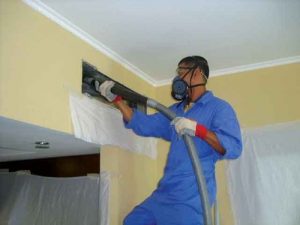There exist many ways of caring for dermestid beetles. Different individuals and institutions recommend different ways of handling, feeding, and caring for beetles. However, there are general tips you can use based on your style, convenience, and circumstance. Here are a few general tips you should know.
Avoid keeping your beetles in a sealed container
Airflow is quite essential in keeping the beetles’ cage dry. Trapped moisture creates a conducive environment for mold and mites growth and can cause the meat you provide for feeding to putrefy. Beetles won’t eat wet putrefying meat. You will have to dry it out again for them to feed. Excess moisture also leads to colony death due to the growth of mold and mites. The cage should always be dry throughout. To provide water, place a wet towel for the bugs to use as water and provide humidity during hot, dry days, but be careful about the amount of water you introduce to the cage and how long it takes to get the cage dry. Dermestid beetles don’t need a lot of water around them.
Be gentle when handling your beetles
Beetles don’t bite and can be safely handled with bare hands. So, always handle the larvae gently when moving them from one place to another. You can use a plastic spoon to scoop them from the cage to avoid squishing them with your fingers. You can also use other items like paper plates or cups or clear plastic cups or plates when handling beetles.
Clean out your beetles’ cage every once in a while
Just keeping the cage dry is not enough. You need to clean the cage every few months to avoid frass build-up at the bottom, which makes the smell stronger. The denser frass makes it hard for your beetles to burrow through compared to the regular aspen shavings. After three months, remove all the frass, clean the cage and top off the bedding with fresh aspen shavings. Removing all the beetles can be time-consuming, but if you can lure all of them outside the cage and separate them from the shavings, you can replace the shavings neatly and adequately. Never keep your beetles under direct sunlight. Beetles don’t enjoy too bright light. The darker the cage, the better. That’s why you should avoid heated lamps.
Watch out for changes in growth to detect problems
It’s normal to encounter some unique colored larvae and beetles in your colony. The blonde larva of any size will shed off its skin and develop its normal brunette color after a few days. Most adult dermestid beetles are black with white bellies. Some beetles emerge damaged from their pupal stage, their wings and backs don’t develop properly, but this should not worry you. They will still live a long, happy life in your colony.




